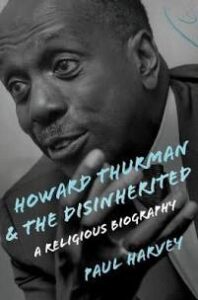 Takeaway: Amazingly, there has not been a good biography of Thurman in so long.
Takeaway: Amazingly, there has not been a good biography of Thurman in so long.
This is the third book by or about Howard Thurman I have read this year, and I have started re-reading the fourth. Howard Thurman is not as well known as I would like. But he was an influential mentor, teacher, and pastor throughout the 20th century. Thurman was born and spent his childhood in Daytona Beach. (He was less than two weeks older than CS Lewis but lived nearly 20 years longer.) Because there was no high school in Daytona Beach that permitted Black students, he was forced to move away from Daytona to go to high school. (There were only three high schools for Black students in the whole state of Flordia.) He then went to college at Morehouse and Crozer Divinity School (the latter two of which Martin Luther King, Jr also went to a generation later.) He graduated as valedictorian at both.
He served several years as a pastor in Oberlin, Ohio, before returning to teach at Morehouse (and Spellman) and work as its chaplain. Four years later, he became Dean of the Chapel at Howard University, where he served for 12 years. In 1944, he became pastor of one of the first intentionally interracial churches in the US, Church for the Fellowship of All Peoples, in San Francisco. He served as pastor there for nine years before becoming the Dean of Marsh Chapel at Boston University, where he served until his retirement in 1965. He moved back to San Francisco, working as a writer, speaker, and mentor until he passed away in 1981.
As much as his work was groundbreaking and important on its own, Paul Harvey shows how Thurman was continually frustrated with his inability to pastor and lead churches and the university system’s religious education as he wished. He was a mystic and thought deeply about what I would consider the sociology of religion.
Howard Thurman is best known for three things. In 1935, he, his wife, and another couple went on a tour of India. The tour brought four Black Americans to India to interact with and learn about the caste system and non-violent resistance. The group were the first African Americans to meet Gandhi. Thurman’s reports about non-violent resistance inspired the Civil Rights movement and led to several others visiting Gandhi.
The second related thing that Thurman is well known for is his relationship with Martin Luther King Jr. Thurman was at Morehouse at the same time as Martin Luther King Sr., and Sue Bailey Thurman, Thurman’s second wife, was a college roommate of Alberta Williams King, MLK Jr’s mother. Despite that family relationship and the fact that there was a year overlap when MLK Jr and Thurman were both at Boston University, it appears that they only spent two extended days together. One day was at Thurman’s house watching baseball while King was a student. And a second day was about a decade later when King was in the hospital recovering after being stabbed. Despite a fairly regular correspondence, they never did spend extended time together beyond that. Thurman gave one of the eulogies at MLK Jr’s funeral.
Read more







 Summary: An overview of the first 14 ‘rules’ of discernment.
Summary: An overview of the first 14 ‘rules’ of discernment.